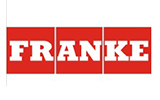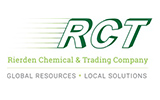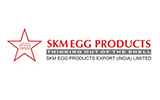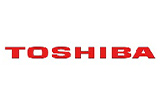Table of Contents
Chapter 1. Global Feminine Hygiene Products Market Executive Summary
1.1. Global Feminine Hygiene Products Market Size & Forecast (2025-2033)
1.2. Regional Summary
1.3. Segmental Summary
1.3.1. By Nature
1.3.2. By Type
1.3.3. By Distribution Channel
1.4. Key Trends
1.5. Recession Impact
1.6. Analyst Recommendation & Conclusion
Chapter 2. Global Feminine Hygiene Products Market Definition and Research Assumptions
2.1. Research Objective
2.2. Market Definition
2.3. Research Assumptions
2.3.1. Inclusion & Exclusion
2.3.2. Limitations
2.3.3. Supply Side Analysis
2.3.3.1. Availability
2.3.3.2. Infrastructure
2.3.3.3. Regulatory Environment
2.3.3.4. Market Competition
2.3.3.5. Economic Viability (Consumer's Perspective)
2.3.4. Demand Side Analysis
2.3.4.1. Regulatory Frameworks
2.3.4.2. Technological Advancements
2.3.4.3. Environmental Considerations
2.3.4.4. Consumer Awareness & Acceptance
2.4. Estimation Methodology
2.5. Years Considered for the Study
2.6. Currency Conversion Rates
Chapter 3. Global Feminine Hygiene Products Market Dynamics
3.1. Market Drivers
3.1.1. Rising Awareness of Menstrual Hygiene and Personal Care
3.1.2. Government and NGO Initiatives to Eliminate Menstrual Taboos
3.1.3. Technological Advancements in Eco-friendly Product Design
3.2. Market Challenges
3.2.1. High Costs Associated with Premium Hygiene Products
3.2.2. Cultural Stigmas and Societal Barriers
3.3. Market Opportunities
3.3.1. Expansion of Eco-friendly and Biodegradable Product Lines
3.3.2. Growing Demand in Emerging Economies
3.3.3. Innovative Distribution Channels and Digital Penetration
Chapter 4. Global Feminine Hygiene Products Market Industry Analysis
4.1. Porter's 5 Force Model
4.1.1. Bargaining Power of Suppliers
4.1.2. Bargaining Power of Buyers
4.1.3. Threat of New Entrants
4.1.4. Threat of Substitutes
4.1.5. Competitive Rivalry
4.1.6. Futuristic Approach to Porter's 5 Force Model
4.1.7. Porter's 5 Force Impact Analysis
4.2. PESTEL Analysis
4.2.1. Political
4.2.2. Economical
4.2.3. Social
4.2.4. Technological
4.2.5. Environmental
4.2.6. Legal
4.3. Top Investment Opportunity
4.4. Top Winning Strategies
4.5. Disruptive Trends
4.6. Industry Expert Perspective
4.7. Analyst Recommendation & Conclusion
Chapter 5. Global Feminine Hygiene Products Market Size & Forecasts by Nature 2025-2033
5.1. Segment Dashboard
5.2. Global Feminine Hygiene Products Market: Nature Revenue Trend Analysis, 2022 & 2032 (USD Million/Billion)
5.2.1. Disposable
5.2.2. Reusable
Chapter 6. Global Feminine Hygiene Products Market Size & Forecasts by Type 2025-2033
6.1. Segment Dashboard
6.2. Global Feminine Hygiene Products Market: Type Revenue Trend Analysis, 2022 & 2032 (USD Million/Billion)
6.2.1. Sanitary Napkins
6.2.2. Panty Liners
6.2.3. Tampons
6.2.4. Menstrual Cups
Chapter 7. Global Feminine Hygiene Products Market Size & Forecasts by Distribution Channel 2025-2033
7.1. Segment Dashboard
7.2. Global Feminine Hygiene Products Market: Distribution Channel Revenue Trend Analysis, 2022 & 2032 (USD Million/Billion)
7.2.1. Supermarket & Hypermarket
7.2.2. E-Commerce
7.2.3. Department Store
7.2.4. Retail
Chapter 8. Global Feminine Hygiene Products Market Size & Forecasts by Region 2025-2033
8.1. North America Feminine Hygiene Products Market
8.1.1. U.S. Feminine Hygiene Products Market
8.1.1.1. By Nature & Type Breakdown, 2025-2033
8.1.1.2. By Distribution Channel Breakdown, 2025-2033
8.1.2. Canada Feminine Hygiene Products Market
8.2. Europe Feminine Hygiene Products Market
8.2.1. UK Feminine Hygiene Products Market
8.2.2. Germany Feminine Hygiene Products Market
8.2.3. France Feminine Hygiene Products Market
8.2.4. Spain Feminine Hygiene Products Market
8.2.5. Italy Feminine Hygiene Products Market
8.2.6. Rest of Europe (ROE) Feminine Hygiene Products Market
8.3. Asia Pacific Feminine Hygiene Products Market
8.3.1. China Feminine Hygiene Products Market
8.3.2. India Feminine Hygiene Products Market
8.3.3. Japan Feminine Hygiene Products Market
8.3.4. South Korea Feminine Hygiene Products Market
8.3.5. Australia Feminine Hygiene Products Market
8.3.6. Rest of Asia Pacific (RoAPAC) Feminine Hygiene Products Market
8.4. Latin America Feminine Hygiene Products Market
8.4.1. Brazil Feminine Hygiene Products Market
8.4.2. Mexico Feminine Hygiene Products Market
8.4.3. Rest of Latin America Feminine Hygiene Products Market
8.5. Middle East & Africa Feminine Hygiene Products Market
8.5.1. Saudi Arabia Feminine Hygiene Products Market
8.5.2. South Africa Feminine Hygiene Products Market
8.5.3. Rest of Middle East & Africa (RoMEA) Feminine Hygiene Products Market
Chapter 9. Competitive Intelligence
9.1. Key Company SWOT Analysis
9.1.1. Procter & Gamble Co.
9.1.2. Kimberly-Clark Corporation
9.1.3. Johnson & Johnson
9.2. Top Market Strategies
9.3. Company Profiles
9.3.1. Procter & Gamble Co.
9.3.1.1. Key Information
9.3.1.2. Overview
9.3.1.3. Financial (Subject to Data Availability)
9.3.1.4. Product Summary
9.3.1.5. Market Strategies
9.3.2. Unicharm Corporation
9.3.3. Edgewell Personal Care Company
9.3.4. Kao Corporation
9.3.5. Hengan International Group Company Limited
9.3.6. Ontex Group NV
9.3.7. The Honest Company, Inc.
9.3.8. Rael, Inc.
9.3.9. Diva International Inc.
9.3.10. Cora
9.3.11. Saalt, LLC
9.3.12. First Quality Enterprises, Inc.
9.3.13. Natracare LLC
9.3.14. (Additional companies as applicable, if any)
Chapter 10. Research Process
10.1. Research Process
10.1.1. Data Mining
10.1.2. Analysis
10.1.3. Market Estimation
10.1.4. Validation
10.1.5. Publishing
10.2. Research Attributes























